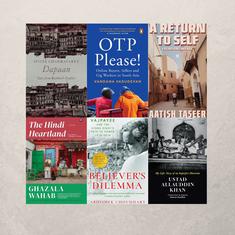You need a sturdy bottom to take in Lav Diaz’s cinema. The Filipino arthouse director’s latest production clocks 226 minutes and has won the top prize, the Golden Lion, at the Venice Film Festival. The Woman Who Left follows the life of a former convict who has spent three decades in prison for a crime she did not commit. The head of the jury that picked the movie, Sam Mendes, made it clear why Diaz’s approach needs to be recognised and rewarded: “We’re here to encourage people to come to the cinema to see original films,” Mendes said.
One would imagine that a director who packs three films into one labours for years over a single title, but Diaz defies expectations. His previous film, A Lullaby To The Sorrowful Mystery, was 485 minutes long and won the Silver Bear for Best Director in Berlin in 2016. The account of the history of the Philippines was the longest film to compete at Berlin. Festival viewers sneaked in inflatable pillows and granola bars for the screening, one report noted, and more than half the audience stayed till the end.
A Lullaby To The Sorrowful Mystery is 35 minutes longer than Diaz’s Melancholia (2008), which also wowed the Venice Film Festival jury and won the top honour in the Horizons section that year. The independent director, who is blessed with producers who support his vision, has been challenging the belief that cinema is measured by its duration since his third film, West Side Avenue (315 minutes). His langorously paced and multi-layered movies, which explore various aspects of Filipino history, include From What Is Before (338 minutes), Century of Birthing (360 minutes), Evolution of a Filipino Family (540 minutes), Heremias (540 minutes) and Death in the Land of Encantos (540 minutes).
Diaz is not the only director who believes in provoking attention deficit audiences around the world. Resan (1987), Peter Watkins’s documentary on the nuclear arms race, clocks 873 minutes.
Documentaries seem to lend themselves to discursive explorations. Shoah, Claude Lanzmann’s landmark film on the Holocaust that includes interviews with survivors and Nazi perpetrators, comes in at 613 minutes. Wang Bing’s Tie Xi Qu: West of the Tracks, about the decline of an industrial zone in China, runs in three parts at 551 minutes.
Very long films are more heard of than seen. At 773 minutes, French New Wave director Jacques Rivette’s Out 1, which explores the aftermath of the May 1968 protests in France through two rival theatre groups, has been rarely seen in its original length. Pared-down versions (such as a relatively modest 240-minute cut) have been screened. Two shows of the original film at the Museum of Moving Image in New York City in 2006 were sold out, encouraging organisers to hold two more screenings.
Another arthouse god, the Hungarian director Bela Tarr, is responsible for Sátántangó (432 minutes). Based on a novel of the same name by long-time collaborator László Krasznahorkai, Sátántangó is set on a collective farm that is on the brink of collapse. Like Out 1, it has rarely been seen, but has been issued on DVD.
Films that originate as mini-series for television also boast of an extended running time, including Ingmar Bergman’s Fanny and Alexander (188 minutes), Oliver Assayas’s Carlos (334 mins) and Raul Ruiz’s Mysteries of Lisbon (272 minutes). Movies made in two or three parts over a span of a few years also get lumped into the same list, such as Masaki Kobayashi’s The Human Condition (579 minutes), Peter Jackson’s The Lord of the Rings (681 minutes), Lars Von Trier’s Nymphomaniac (325 minutes) and Miguel Gomes’s Arabian Nights (381 minutes). Indian viewers who complain that our films are too long will be pleased to know that Anurag Kashyap’s two-part Gangs of Wasseypur adds up to 319 minutes.










